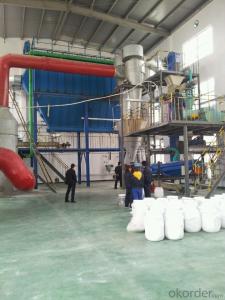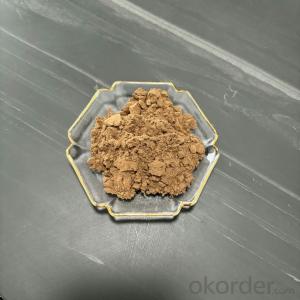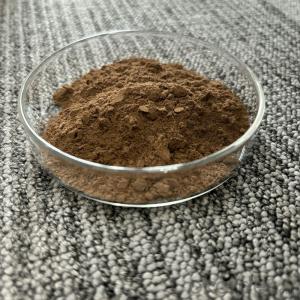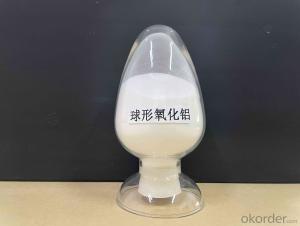SDIC Best Quality With Low Price from China Factory
- Loading Port:
- Tianjin
- Payment Terms:
- TT OR LC
- Min Order Qty:
- 17 m.t.
- Supply Capability:
- 1800 m.t./month
OKorder Service Pledge
OKorder Financial Service
You Might Also Like
SDIC
Introduction:
SDIC White powder or grain with chlorine odor . It is a strong oxidant and chlorate agent and can dissolved in water easily . Its aqueous solution assumes weak acidity and the active chlorine in its dry products lose little when it is stored for a long time at the atmospheric temperature .
SDIC Image:

SDIC Specification:
Chemical Name | Sodium Dichloroisocyanurate | |
Molecular Formula: | C3O3N3HCL2NA | |
Molecular Weight: | 220.96 | |
CAS Number: | 2893-78-9 | |
Product | 60% | 56% |
Available chlorine(%,min) | 60 | 56 |
Moisture content(% max) | 5 | 8 |
PH Value(1% solution) | 6-7 | 6-7 |
Particles Size:
Mesh | 5~8 | 8~30 | 20~40 | 20~60 |
Main usage:
this products can effectively kill various germs, fung uses and viruses, specially A&B type hepatitis viruses. It is effective on killing algae, decolorizing cleaning water or bleaching .It can be widely used for epidemic prevention, livestock farming , industry and agriculture.
Package:
50KG PLASTIC DRUMS/ FIBER DRUMS.
25KG PLASTIC DRUMS/FIBER DRUMS.
1000KG BIG BAGS.
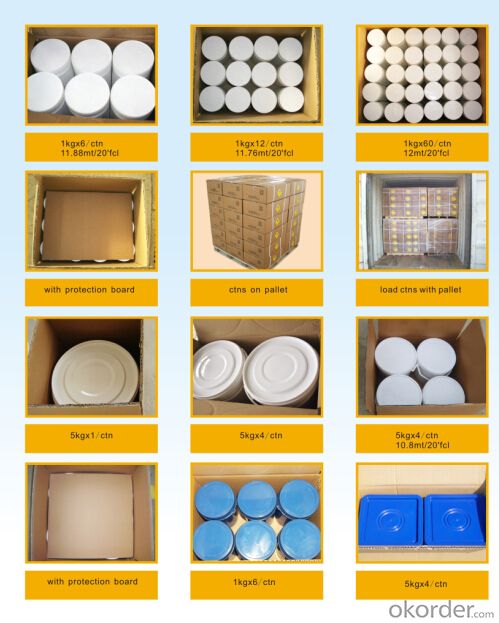
- Q:Thorough explanation pls.
- by lowering the activation energy
- Q:Chemical catalyst system baa?
- Can speed up or slow down the reaction rate without participating in the reaction of the material
- Q:What is the analytical principle of chemical adsorbents? How about the number of active catalyst centers tested?
- What do you mean by the chemical adsorber? BET is the use of the surface of the uneven force field, but the inert gas at low temperature in the surface adsorption. TPD, TPR is the number of active centers that can be measured by the technique of desorption and reduction between specific gases and catalysts as the temperature increases. If the active site is a reduced position, H2-TPR can be used. If the active site is acidic, NH3-TPD can be used, but also the method of alkali titration.
- Q:How does active charcoal catalyze in some chemical reactions?
- It is a carrier, because its particles are small (micron level, nano-level), has a relatively large surface area, can be loaded on the catalyst to provide more reaction sites. Although called activated carbon, but its catalytic aspects of the relevant business reports.
- Q:what is the difference between enzyme and catalyst?
- Enzymes and catalysts both affect the rate of a reaction. The difference between catalysts and enzymes is that while catalysts are inorganic compounds, enzymes are largely organic in nature and are bio-catalysts. Even though all known enzymes are catalysts, all catalysts are not enzymes. Moreover, catalysts and enzymes are not consumed in the reactions they catalyze. Catalysts are low molecular weight componds, enzymes are high molecular globular proteins. Catalysts are inorganic, enzymes are organic. Catalyst reaction rates are slower (usually) than enzyme reaction rates. Catalysts are not generally specific - enzymes are VERY specific. Catalysts increase or decrease the rate of a chemical reaction, enzymes are proteins that incrase the rate of chemical reactions & convert the substrate into product. There are 2 types of catalysts - (positive & negative), and the 2 types of enzymes are activation enzymes and inhibitory enzymes. Catalysts are simple inorganic molecules, while enzymes are complex proteins.
- Q:explain how a catalyst can affect the rate of reaction but not be in the overall equation.?
- Catalysts act to increase the rate of reaction, for example by providing an alternative reaction pathway which lowers the activation energy of the reaction i.e. increasing the likelihood of successful collisions between the reactants. However, they are not used up during the course of the reaction, and at the end you have exactly the same mass of catalyst as you started with, unlike the reactant(s), which will be used up to form product(s). So, the overall equation of the reaction does not include the catalyst because it only needs to show the substances which are used up or formed during the course of the reaction i.e. the reactants and products.
- Q:in my 99 ram 2500 v8 5.9 that code came up, not sure what to do about it or what it could be any ideas or help with be great thanks
- The question was for bank 1 and the code is for bank2.Toadyboy is correct.Follow his lead.
- Q:Does all chemical reactions have a catalyst?
- Not some reaction without catalyst
- Q:Can some chemical reactions have a variety of catalysts that are correct or wrong?
- Very correct, many reactions can have a lot of catalyst. Such as hydrogen peroxide decomposition can be used manganese dioxide or fe destroy
1. Manufacturer Overview |
|
|---|---|
| Location | |
| Year Established | |
| Annual Output Value | |
| Main Markets | |
| Company Certifications | |
2. Manufacturer Certificates |
|
|---|---|
| a) Certification Name | |
| Range | |
| Reference | |
| Validity Period | |
3. Manufacturer Capability |
|
|---|---|
| a)Trade Capacity | |
| Nearest Port | |
| Export Percentage | |
| No.of Employees in Trade Department | |
| Language Spoken: | |
| b)Factory Information | |
| Factory Size: | |
| No. of Production Lines | |
| Contract Manufacturing | |
| Product Price Range | |
Send your message to us
SDIC Best Quality With Low Price from China Factory
- Loading Port:
- Tianjin
- Payment Terms:
- TT OR LC
- Min Order Qty:
- 17 m.t.
- Supply Capability:
- 1800 m.t./month
OKorder Service Pledge
OKorder Financial Service
Similar products
New products
Hot products




